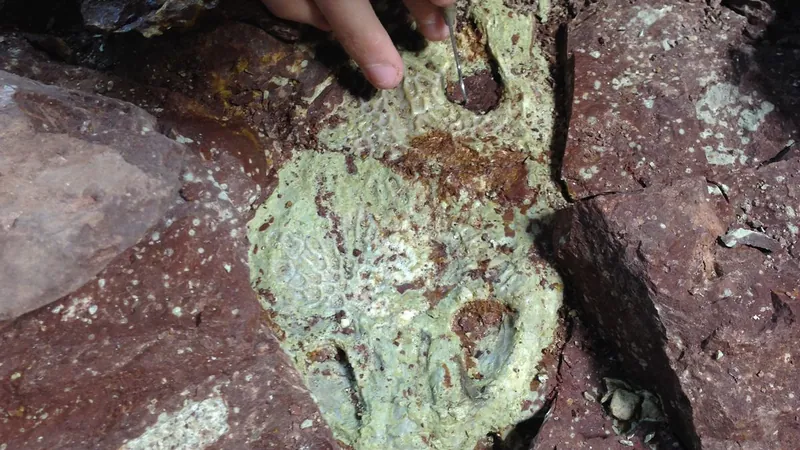
Ancient Giant Amphibians Discovered in Wyoming: A Triassic Mystery Unresolved!
2025-04-02
Author: Yu
Ancient Giant Amphibians Discovered in Wyoming: A Triassic Mystery Unresolved!
Approximately 230 million years ago, a fascinating yet perplexing event unfolded in what is now present-day Wyoming—a mass die-off of at least 19 amphibians, each comparable in size to modern-day alligators. The discovery of these creatures' fossilized remains has provided valuable insights into their existence during the Triassic period, according to a recent study published in the journal PLOS One.
The bones were identified during excavations between 2014 and 2019 at a site known as Nobby Knob. Researchers, led by geologist Aaron Kufner from the University of Wisconsin-Madison, uncovered well-preserved fossils of Buettnererpeton bakeri, an ancient amphibian belonging to a group known as metoposaurids. This family includes large, primitive four-legged amphibians that inhabited freshwater environments.
What sets this discovery apart is not just the number of fossils but the pristine condition in which they were found. The fossils were located in a formation that suggests a sudden death event rather than the gradual accumulation of bones over time. “This assemblage is a snapshot of a single population rather than an accumulation over time,” Kufner revealed. Notably, alongside the B. bakeri fossils, they also uncovered ancient plants, bivalves, and fossilized feces known as coprolites.
Intriguingly, analysis of the bones indicates that they were not carried by flowing water to their resting place, suggesting the amphibians may have died near calm waters and were buried by fine sediments during recurrent floods. This unique preservation allows researchers to study the various sizes of B. bakeri, enhancing understanding of their growth and life stages.
The proximity of the bones indicates that these amphibians likely perished simultaneously, possibly part of a breeding group, or they may have found themselves stranded in drying water bodies. This raises questions about whether such mass die-offs were common for metoposaurids during the Triassic era or if the incident at Nobby Knob was an isolated occurrence.
Additionally, these fossil remains could be pivotal for dating other metoposaurid fossils. The deeper burial of the B. bakeri fossils in comparison to Anaschisma browni, another metoposaurid found in the nearby Popo Agie Formation, suggests that they are older, providing valuable correlation data for paleontologists working to understand the chronology of these species across Wyoming, Colorado, and Utah.
This revelation about the past not only deepens our understanding of the life and extinction of these giant amphibians but also raises excitement in the scientific community. What other mysteries lie buried in the ancient rock layers of the American West? The secrets of the Triassic continue to unfold, offering a tantalizing glimpse into a bygone era where creatures like Buettnererpeton bakeri roamed the Earth.


 Brasil (PT)
Brasil (PT)
 Canada (EN)
Canada (EN)
 Chile (ES)
Chile (ES)
 Česko (CS)
Česko (CS)
 대한민국 (KO)
대한민국 (KO)
 España (ES)
España (ES)
 France (FR)
France (FR)
 Hong Kong (EN)
Hong Kong (EN)
 Italia (IT)
Italia (IT)
 日本 (JA)
日本 (JA)
 Magyarország (HU)
Magyarország (HU)
 Norge (NO)
Norge (NO)
 Polska (PL)
Polska (PL)
 Schweiz (DE)
Schweiz (DE)
 Singapore (EN)
Singapore (EN)
 Sverige (SV)
Sverige (SV)
 Suomi (FI)
Suomi (FI)
 Türkiye (TR)
Türkiye (TR)
 الإمارات العربية المتحدة (AR)
الإمارات العربية المتحدة (AR)